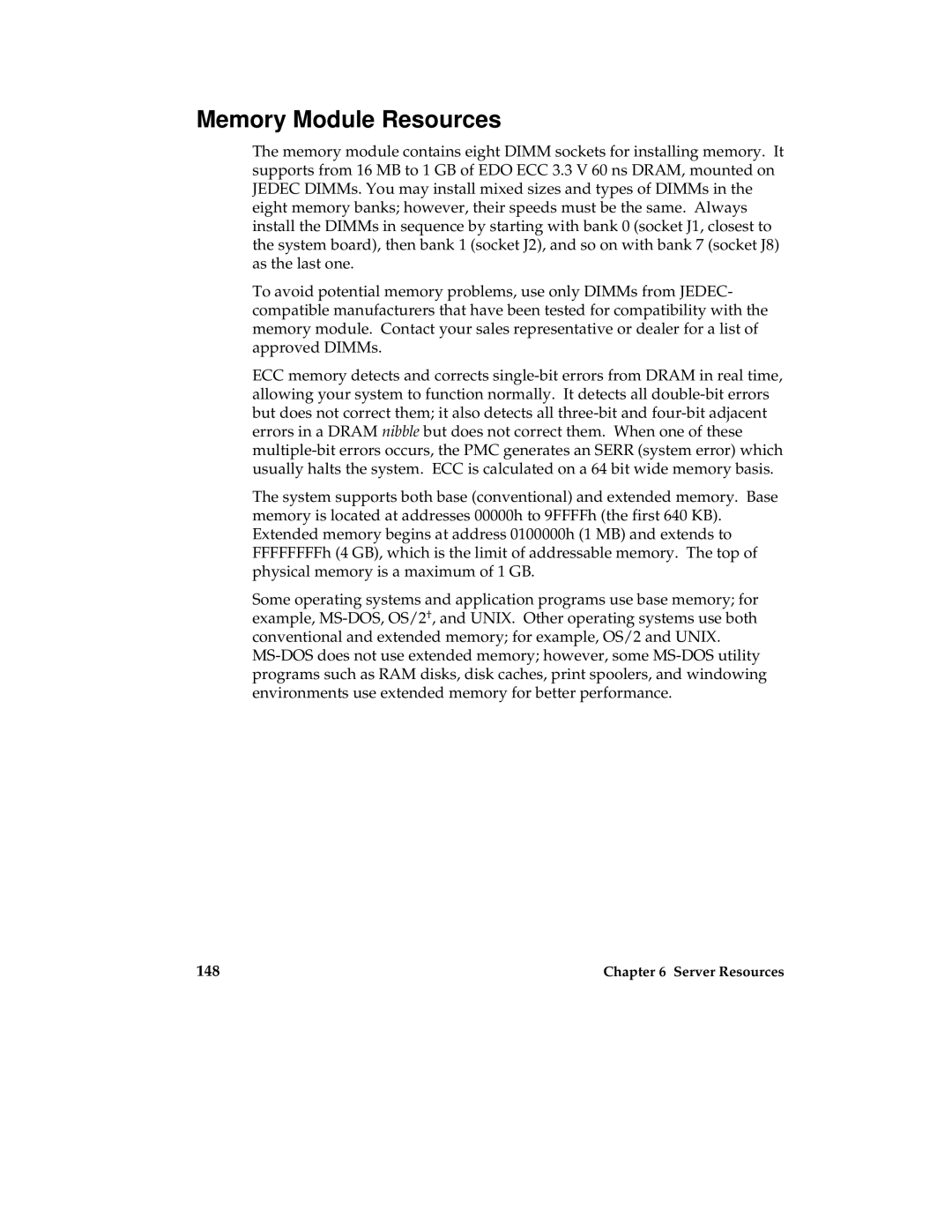Memory Module Resources
The memory module contains eight DIMM sockets for installing memory. It supports from 16 MB to 1 GB of EDO ECC 3.3 V 60 ns DRAM, mounted on JEDEC DIMMs. You may install mixed sizes and types of DIMMs in the eight memory banks; however, their speeds must be the same. Always install the DIMMs in sequence by starting with bank 0 (socket J1, closest to the system board), then bank 1 (socket J2), and so on with bank 7 (socket J8) as the last one.
To avoid potential memory problems, use only DIMMs from JEDEC- compatible manufacturers that have been tested for compatibility with the memory module. Contact your sales representative or dealer for a list of approved DIMMs.
ECC memory detects and corrects
The system supports both base (conventional) and extended memory. Base memory is located at addresses 00000h to 9FFFFh (the first 640 KB). Extended memory begins at address 0100000h (1 MB) and extends to FFFFFFFFh (4 GB), which is the limit of addressable memory. The top of physical memory is a maximum of 1 GB.
Some operating systems and application programs use base memory; for example,
148 | Chapter 6 Server Resources |
